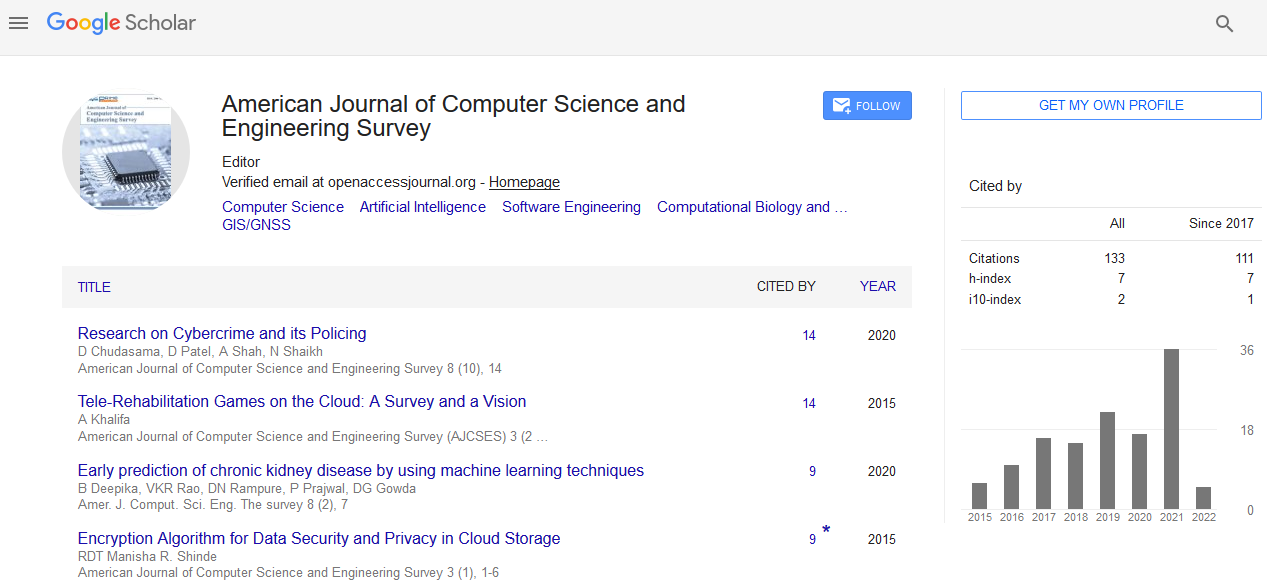Commentary Article - (2022) Volume 10, Issue 3
Role of Computerised Image Recognition in Digital Twinning Technology
Xuezhou Yang*
Department of Technology, Technical University of Shangai, China
*Correspondence:
Xuezhou Yang, Department of Technology, Technical University of Shangai,
China,
Tel: 8954712658,
Email:
Received: 02-May-2022, Manuscript No. IPACSES-22-13605;
Editor assigned: 04-May-2022, Pre QC No. IPACSES-22-13605(PQ);
Reviewed: 18-May-2022, QC No. IPACSES-22-13605;
Revised: 23-May-2022, Manuscript No. IPACSES-22-13605(R);
Published:
30-May-2022, DOI: 10.36846/2349-7238-10.3.13
Description
Glaessegen and Stargel1 characterized advanced twin as “a coordinated
multiphysics, multiscale, probabilistic reproduction
of a perplexing item, what capacities to reflect the existence
of its comparing twin”. Advanced twin comprises of three sections:
the actual item, the virtual item and the linkage among
physical and virtual item . As of now, the utilization of computerized
twin isn’t normal, however advanced twin has incredible
potential3 . Toward the finish of 2016, Gartner, a worldrenowned
IT research and counseling firm, called attention
to in its ‘Main 10 Trends for 2017’ that “countless items will
before long be addressed by computerized twins” . Picture acknowledgment
innovation is a significant field of man-made
reasoning, it alludes to the picture object acknowledgment, to
distinguish a wide range of examples of the objective and item
innovation. As an adult innovation, picture acknowledgment
innovation has step by step settled after a few pinnacles of mechanical
development4. It is recorded as one of the 10 run of
the mill innovation involves in the White Paper on the Judicial
Application of Internet Technology distributed by the Beijing
Internet Court. In this article, we will apply picture acknowledgment
innovation to the advanced twin innovation to make
the visual acknowledgment of the computerized twin more exact.
This errand involves picture acknowledgment innovation
as the examination subject of decision for advanced twins and
mechanical arm workstations. We will audit the principal steps
and central issues in applying picture acknowledgment to computerized
twin innovation, sum up the troubles of use, lastly
check the tangram try. At long last, the utilization of picture acknowledgment
innovation has been effectively accomplished
with computerized twin innovation. Equipment planning incorporates
a bunch of conventional tangram parts, a KUKA KR6
mechanical arm and its adornments, a S71200 model mounted
on the 6th hub of the KUKA KR6 mechanical arm for picture acknowledgment,
and a roundabout mount around the camera.
Incorporates fill lights. During camera catch, an annular light fill
light uncovered and fills the light, guaranteeing the consistency
and dependability of each picture catch. Notwithstanding
the picture securing part, the 6th hub of the KUKA KR6 mechanical
arm has two associated with two five-guide two-way
solenoid valves each toward give adequate attractions power
to suck the tangram. Furnished with a pneumatic module. The
air valve is associated with the 6th shaft through an air tube,
before which a versatile attractions cup is appended to forestall
actual harm because of extreme augmentation of the mechanical
arm. This trial expects to understand the use of picture
acknowledgment innovation in computerized twins through
advanced twin programming and mechanical arms. At last, we
approved the examination by joining dispersed unique pieces
into a specific shape. In this trial, the PC and PLC go about as
the fundamental regulator and more elevated level PC framework,
individually. As the main connection point to the client,
the PC assumes control over large scale control between the
genuine framework and the virtual model. The PC is likewise
answerable for checking the genuine framework and showing
the reproduction brings about constant while perusing the client
input and downloading the proper program to the PLC. As
the regulator for this trial, the PLC is answerable for microcontrol
between the genuine framework and the virtual model and
lays out an association between the genuine framework and
the virtual model by means of the OPC convention.
Acknowledgement
None.
Conflict of Interest
The author declares there is no conflict of interest in publishing
this article.
Citation: Xuezhou Y. (2022) Role of Computerised Image Recognition in Digital Twinning Technology. Am J Comp Science Eng Surv. 10:13.
Copyright: © Xuezhou Y. This is an open-access article distributed under the terms of the Creative Commons Attribution License, which permits unrestricted use, distribution, and reproduction in any medium, provided the original author and source are credited.

